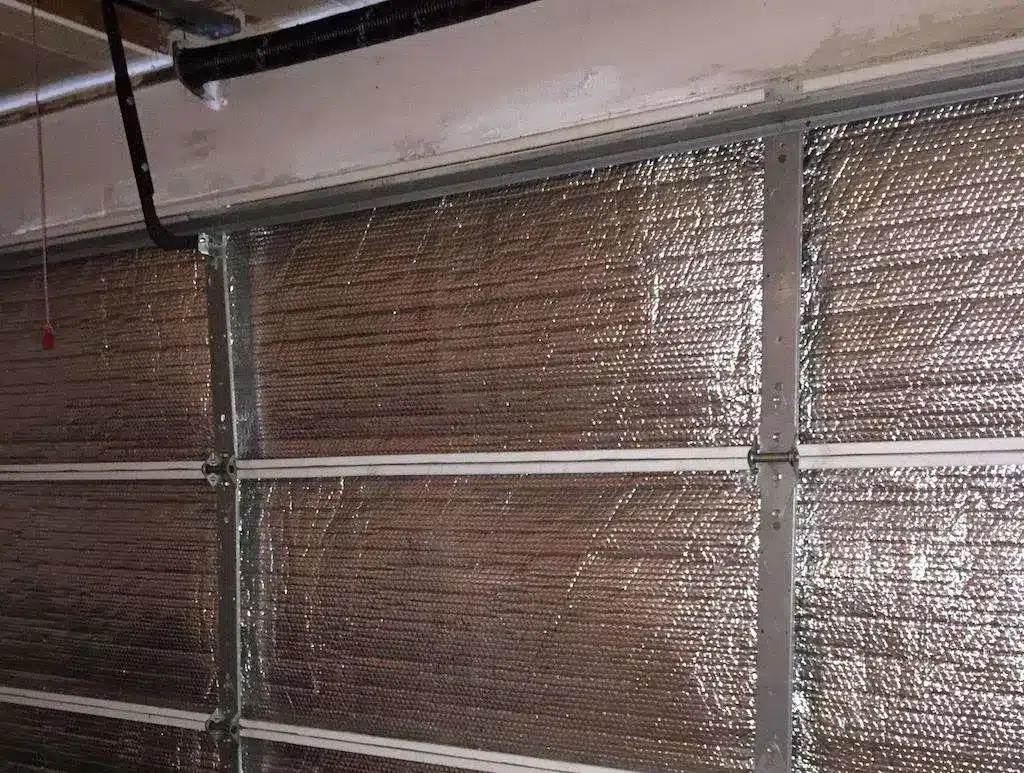Insulating your garage door is a smart investment that can provide numerous benefits, from improving energy efficiency to enhancing comfort. Whether you use your garage as a workshop, storage space, or simply a place to park your car, proper insulation ensures that it remains comfortable all year round. In this article, we will discuss various tips and ideas for insulating your garage door, helping you make informed decisions and achieve optimal results.
Types of Garage Door Insulation
When it comes to insulating your garage door, there are different types of insulation materials to choose from. The most common options include batt insulation, reflective foil insulation, and rigid foam insulation.
Batt insulation is a popular choice due to its affordability and easy installation. It consists of fiberglass or mineral wool insulation held together by a facing material. Batt insulation is available in pre-cut panels that can be easily fitted into the garage door panels.
Reflective foil insulation is another effective option. It features a layer of reflective material, often aluminum, which helps to reflect heat away from the door. Reflective foil insulation is typically installed by attaching it directly to the garage door panels.
Rigid foam insulation provides excellent thermal resistance and structural support. It is composed of dense foam panels that can be cut to fit the dimensions of the garage door. Rigid foam insulation offers superior insulation properties but may require more effort during installation.
Assessing Your Garage Door’s Insulation Needs
Before installing insulation, it’s essential to evaluate your garage door’s insulation needs. One crucial factor to consider is the R-value requirement. The R-value measures the insulation material’s effectiveness in resisting heat flow. The higher the R-value, the better the insulation performance. Consult an expert or refer to local building codes to determine the appropriate R-value for your location.
Additionally, accurately measuring the dimensions of your garage door is essential to ensure proper insulation coverage. Measure both the width and height of each panel to determine the amount of insulation material required.
Preparing for Insulation Installation
To begin the insulation installation process, start by cleaning the garage door surface. Remove any dirt, dust, or debris using a mild detergent or household cleaner. Ensure the surface is completely dry before proceeding.
Next, gather all the necessary tools and materials for the installation. This may include insulation panels, a utility knife, measuring tape, adhesive, a caulking gun, weatherstripping, and a ladder. Having everything ready beforehand will make the installation process smoother and more efficient.
Insulation Installation Process

The method of insulation installation depends on the type of insulation material chosen. Here, we’ll outline the process for each common option: batt insulation, reflective foil insulation, and rigid foam insulation.
Installing Batt Insulation
- Carefully measure the dimensions of each garage door panel.
- Cut the batt insulation panels to fit each panel, leaving a slight gap for expansion.
- Place the insulation panels into each panel recess, ensuring a snug fit.
- Use adhesive or fasteners to secure the insulation and prevent it from sagging.
Applying Reflective Foil Insulation
- Measure and cut the reflective foil insulation sheets to match the dimensions of each panel.
- Attach the foil insulation directly onto the garage door panels using adhesive or double-sided tape.
- Ensure that the reflective side faces the interior of the garage.
- Smooth out any wrinkles or air pockets for optimal performance.
Attaching Rigid Foam Panels
- Measure and cut the rigid foam panels to fit each panel recess.
- Apply adhesive on the back of each foam panel and press them firmly against the door surface.
- Use fasteners or nails to secure the foam panels in place.
- Fill any gaps between the foam panels with expanding foam sealant for better insulation effectiveness.
Sealing Gaps and Cracks
To maximize the insulation’s efficiency, it’s crucial to seal any gaps or cracks present in the garage door. These openings allow unwanted air infiltration, reducing the insulation’s overall effectiveness. Here’s how you can effectively seal gaps and cracks:
- Inspect the garage door for any visible gaps or cracks, paying close attention to the edges and joints.
- Apply weatherstripping along the sides and top of each door panel to create a tight seal when closed.
- Use caulk to seal any visible cracks or gaps in the door panels.
- Consider installing a bottom weather seal to prevent drafts and keep out pests.
Maintaining and Monitoring Insulation Effectiveness
Regularly inspecting your garage door insulation is essential to ensure its continued effectiveness. Over time, the insulation may become damaged or worn out, compromising its insulation properties. Here are some tips for maintaining and monitoring your insulation:
- Conduct periodic inspections to check for any signs of damage, including tears, moisture, or pest infestations.
- Replace or repair damaged insulation promptly to maintain optimal energy efficiency.
- Monitor the garage temperature throughout the year to gauge the insulation’s effectiveness.
- Consider upgrading or adding additional insulation if necessary.
Additional Tips for Energy Efficiency
In addition to insulating the garage door, there are a few extra steps you can take to further enhance energy efficiency:
- Install insulated garage windows to reduce heat transfer and improve natural lighting.
- Add a weather seal at the bottom of the garage door to prevent drafts and keep out insects and rodents.
- Consider insulating the walls and ceiling of the garage for comprehensive energy savings.
By implementing these additional measures, you can create a well-insulated garage space that is comfortable and energy-efficient year-round.
Conclusion
Insulating your garage door is a practical and cost-effective way to improve energy efficiency and enhance comfort. By understanding the different types of insulation materials available, assessing your garage door’s insulation needs, and following proper installation techniques, you can achieve optimal results. Regular maintenance and monitoring will ensure that your garage door insulation continues to perform effectively. With these expert tips and ideas, you can transform your garage into a more comfortable and energy-efficient space.




